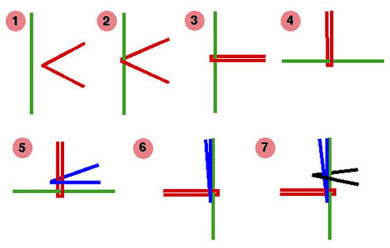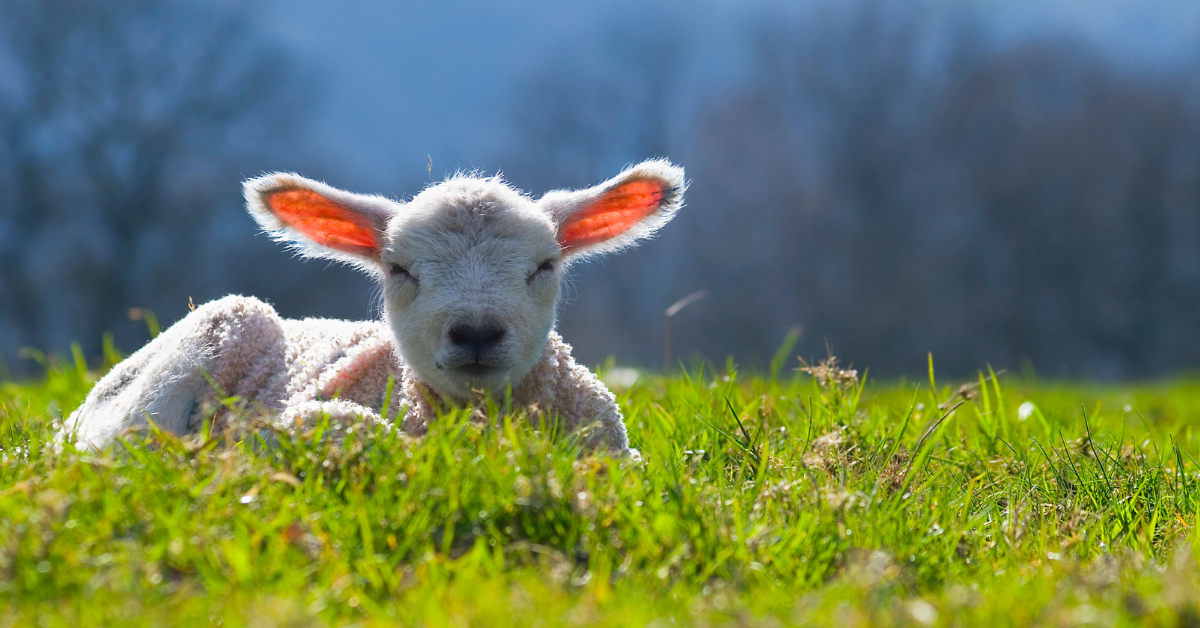This is your guide to understanding Imbolc (Imbolg) in Ireland, with Lora O’Brien. Today we’re turning our focus to the rich traditions and nuanced discussions surrounding this Fire festival, so we can learn, experience and integrate, as per the 3 Pillars of Irish Paganism.
(Downloadable Free Imbolc Cheat Sheet is Below!)
What is Imbolc?
Imbolc, pronounced as ‘Im-ulk’ (rhyming with bulk), is a traditional Irish fire festival. It signifies the beginning of spring, typically celebrated on February 1st and 2nd. This festival is also associated with Saint Brigid’s Day.
Personally, I prefer to use the name Imbolg for this festival, derived from the Irish i mBolg, which translates to ‘in the belly’. This reflects the aspect of pregnancy, encompassing both animals and humans, as conceptions happening around Bealtaine typically lead to births at this time.
The term Imbolc is also widely used, possibly linked to the idea of washing or a ‘spring clean’ after winter, with Folc in Irish meaning ‘bathe or wash’. The other festival name, Oimelc, is often interpreted as ‘ewe’s milk’. In modern Irish, that would be Bainne na Caoirigh, but it doesn’t quite have the same resonance.
But when exactly should we celebrate Imbolc?
What is the True Date of Imbolc?
The timing of Imbolc sparks some debate. Some advocate for the astronomical midpoint between the winter solstice and spring equinox, which varies each year. If Imbolc is understood to be halfway between the winter solstice and the vernal equinox, measured in days, we can calculate this midpoint for 2024 as an example.
In 2023, the winter solstice in Ireland was at precisely 3:27 AM on Friday, December 22nd. This marked the moment of the sun’s lowest declination in the sky. The spring equinox in 2024 is expected to occur at 3:06 AM on Wednesday, March 20th, 2024.
According to my calculations, taking into account that 2024 is a leap year, there are 89 days between December 22nd, 2023, and March 20th, 2024. When we divide this period by two, we find that the halfway point, or the cross-quarter date for Imbolc in 2024, falls on February 4th.
It’s a simple and straightforward process once you have the correct dates and account for the leap year (but do remember the example dates given here are based on my geographical location and timezone in Ireland… you can google yours locally and do the maths).
Some will wait til they see the first lamb, or even the first shoots or buds of green. Others though, prefer the fixed calendar date of February 1st (Brigid’s Day). Is this wrong? No, of course not. All Irish Fire festivals are a bit wibbly wobbly with the timing, so you can celebrate Imbolc as a standalone, or mix it up with Brigid’s Day, whatever feels right for your personal practice.
As long as you know the facts and reasons, and you are working from solid information and a grounding in authentic Irish traditions, you get to do your personal spirituality in whatever way is right for you.
Please, let’s not overcomplicate things. Allow people to celebrate traditions in peace.
Frequently Asked Questions
What are the cross-quarter days?
In Irish tradition, the Cross Quarter Days are essential dates that fall between the solstices and equinoxes. These include four festivals: Imbolc (February 1st), marking the start of spring; Bealtaine (May 1st), celebrating the beginning of summer; Lúnasa (August 1st), indicating the start of the harvest season; and Samhain (November 1st), heralding the onset of winter.
Also known as the Fire Festivals, they are more than just seasonal landmarks; they are deeply ingrained in Irish culture and heritage. Each festival has its own unique significance and traditions, reflecting the ancient Irish bond with nature and the rhythm of the seasons.
Is it incorrect to celebrate Imbolc on February 1st?
No, it’s perfectly valid. Choose a date that aligns with historical sources, your own spiritual beliefs, and your personal context.
What’s the significance of Brigid in Imbolc?
Saint Brigid, or Brighid the Goddess, can be central to Imbolc, symbolising good health, creativity, skilled crafts, and the beginning of spring. Or, she can have nothing to do with it, for you, and you can focus on a more seasonal celebration.
If you are interested, our online classes about Brigid at the Irish Pagan School, led by Orlagh Costello, delve into her importance. [Class Details Are Here]
Imbolc Seasonal Tradition: The Brigid’s Cross
A traditional Irish practice for this time of year involves crafting a Brigid’s Cross. Typically fashioned from rushes or straw, it is a unique, woven cross with a square centre and four radials tied at the ends.
The crafting of a Brigid’s Cross is not just an artistic endeavor but also holds spiritual significance. It is said to protect homes from harm and to invite Brigid’s blessings, especially her powers of healing and fertility. This cross is often hung in Irish homes, particularly in the kitchen where it is believed to protect the hearth and home.
Making a Brigid’s Cross is a cherished ritual in Ireland, connecting those who partake in its creation to ancient traditions, the cycles of nature, and the enduring legacy of Brigid herself, in both her Pagan and Christian embodiments.
Materials Needed:
- Rushes or straw
- Twine or string
How to Make a Brigid’s Cross
Preparation: Gather your materials and find a quiet space. If possible, light a fresh candle.
Crafting the Cross: Weave the rushes or straw into a cross shape, focusing your thoughts on Brigid and the coming of spring. While crafting, contemplate the changes and new beginnings you wish to invite into your life.
Directions (using biodegradable paper straws) from the Irish Peatlands Conservation Council
- Hold one of the straws vertically. Fold a second straw in half as in the diagram below.
- Place the first vertical staw in the centre of the folded second straw.
- Hold the centre overlap tightly between thumb and forefinger.
- Turn the two straws held together 90 degrees counter clockwise so that the open ends of the second straw are projecting vertically upwards.
- Fold a third straw in half and over both parts of the second straw to lie horizontally from left to right against the first straw. Hold tight.
- Holding the centre tightly, turn the three staws 90 degrees counter clockwise so that the open ends of the third staw are pointing upwards.
- Fold a new straw in half over and across all the staws pointing upwards.
- Repeat the process of rotating all the straws 90 degrees counter clockwise, adding a new folded straw each time until all nine straws have been used up to make the cross.
- Secure the arms of the cross with elastic bands. Trim the ends to make them all the same length. The St Bridget’s Cross is now ready to hang.

Placement: Once complete, place the Brigid’s Cross in your home for protection and blessing. Over the hearth (or your cooker in the kitchen), or above a doorway, are both traditional placements.
Reflection: Consider the symbolism of the cross and its connection to this time of year, and Brigid.
Imbolc Cheat Sheet
For a deeper understanding of Imbolc, download our free ‘Imbolc Cheat Sheet’. It’s based on my online class Imbolc in Ireland and provides insights into authentic Irish customs and traditions.
Download the Imbolc Cheat Sheet Here
Crafting a Brigid’s Cross connects you with the Irish traditions around Imbolc and the reverence for Brigid. It’s a time to welcome spring and renew your connection to nature and spirituality.
Remember, the most important aspect is to celebrate with knowledge and personal relevance.
Learn – Experience – Integrate!
For further resources and updates, subscribe to our community mailing list at the Irish Pagan School.
Slán go fóill, and have a blessed Imbolc season.



[…] days?These are the midpoints between the solstices and equinoxes, and they include Samhain, Imbolc, Bealtaine, and […]
[…] Learn all you can about authentic traditions of Imbolc in Ireland. Try not to just google random things, there is a lot of nonsense online about this. [Here is a Good Source!] […]
Thank you for your love and dedication to the old ways and today’s.
[…] Timing: You can choose February 1st for a fixed calendar date, or calculate the astronomical midpoint, depending on your preference and convenience. [More Info Here] […]
I truely enjoy your knowledge and love for the lived irish tradition. Thank you for sharing your knowledge.
[…] It’s worth noting that today, February 4, is the astronomical cross-quarter. The sun has reached 15° Aquarius, which is the astronomical halfway point between the Winter Solstice at 0° Capricorn, and the Spring Equinox at 0° Aries. There is no evidence that the Celts calculated the actual cross-quarters in setting their fire holidays of Imbolc, Bealtaine, Lughnasadh and Samhain,. But the cross-quarters have fallen very close to those dates. The date of the actual celebration likely varied depending on locality, so celebrating on February 4 wouldn’t be inconsistent with the intent. […]
[…] [Find out more about Imbolc here!] […]
[…] 🕯️Seasonal Offer –> Click for the Imbolc Fire Festival Cheat Sheet 🔥 […]
[…] Irish Gods, she is associated with the Earraigh, the Spring (and particularly the Pagan Festival of Imbolg or Imbolc), and with fertility, and through her fire she brings healing, poetry and […]
[…] the phases of the moon or celebrating seasonal holidays, including our Fire Festivals Samhain, Imbolc, Bealtaine, and Lúnasa. [Click each Festival Name for your Free ‘Cheat Sheet’.] These […]